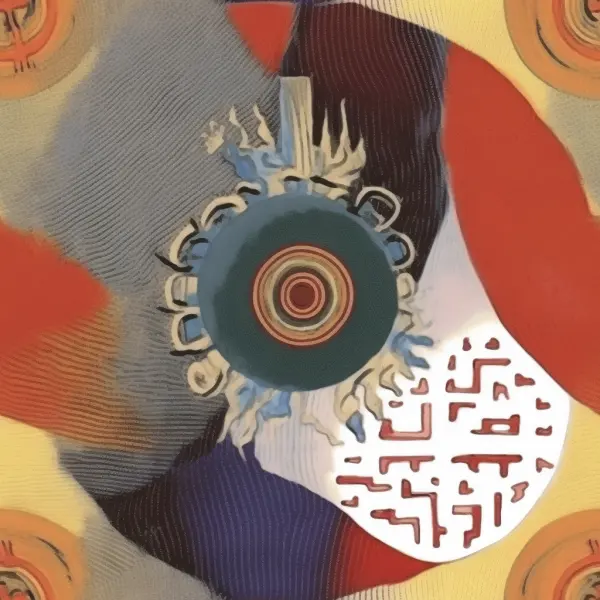内以不同物象对应天干(甲至癸),由内向外
 Midjourney Bot
更新时间:2025-03-17
00:34:25
Midjourney Bot
更新时间:2025-03-17
00:34:25提示词:Internally, different objects correspond to the heavenly stems (Jia to Gui), radiating from the inside out, and finally the end of the tenth ring (Gui) is subtly connected to the starting point of the first ring (Jia), forming a visual metaphor of "the endpoint is the starting point". The symbol of the two poles of life and death: left half (Jia Sheng): depicting the sprouting of "life" in the state of breaking through the soil and tender shoots, rising sun, and curled up baby. The colors are bright, with green and golden interwoven, and the strokes are delicate like gongbi. The oracle bone script "Jia" character lines faintly appear between the branches and leaves. Right half (Gui Die): Interpreting the silence of "death" through the images of withered trees, the sinking moon in the river, and the elderly turning into dust. The color tone is profound, with a blend of deep blue and gray black, and the "Gui" character appears as a crack in the turtle shell between the ink splashes. At the central junction: a blazing white light strip runs through the picture, with the left end turning into a new flame and the right end freezing into ice, sealing the spark in the ice, echoing the philosophical concept of "pregnancy in death". Detail imagery and natural element circulation: In the background, water flows from the mountaintop (A) and cascades into a waterfall, merging into a river (Gui), and transpiration returns to the mountaintop as clouds and rain; Fallen leaves sink into the soil, and new shoots are breaking through the soil. Star orbits and runes: The Milky Way in the sky spirals around the center Taiji, and the trajectories of the stars form the Heavenly Stem rune. The two brightest stars, A and Gui, are intertwined with each other like DNA double strands due to their gravitational pull. Metaphor of living beings: Butterflies flap their wings from the withered bones on the right, and flower buds bloom on the left where scales and powder fall; After swimming upstream to the abyss of Guiwei, the egg shells float back to the shallow waters of Jiawei. The color and light use the "yin-yang gradient" technique: the warm color on the left permeates to the right like blood threads, and the cold color on the right spreads to the left like frost marks, forming a purple gray chaotic zone at the junction, symbolizing the blending of life and death energy. The light source design is dual: the sun wheel above projects the light of vitality, and the earth veins below surge with a faint blue spiritual fire. The two collide in the center of the picture, casting distorted and overlapping shadows of all things, symbolizing the coexistence of the visible and hidden worlds. Cultural symbols embellish the texture of mountains and rocks, embedded with seal carvings of the Tao Te Ching's "The Movement of the Contrary Way"; The branches of the withered tree resemble the gluttonous patterns of bronze ware, and the veins hide the complex hexagrams of the Book of Changes; At the vortex of the water flow, a fragment of Zhuangzi's "Qi Wu Lun" appeared, and the ink characters dissipated and reorganized with the waves. The overall artistic conception of this painting is not a static scene, but rather a stagnant epic of time and space. As the viewer's gaze wanders, they can feel the balance between the restlessness of life and the tranquility of death in the confrontation. Upon closer inspection, every decline hides a budding, and every inch of new life leaves its mark and fades away. In the end, both fear and ecstasy dissolve in the beauty of the cycle itself- that is the ultimate emotion in the mercilessness of the heavens, the eternity in the fleeting birth and death. Paintism, --ar 1:1 --v 5.1 --tile --c 47 --weird 1518 --stylize 592

素材来源:Midjourney官网
Copyright©2017 Midjourney9.com All Right
Reserved 版权所有:成都金翼云科技有限公司 蜀ICP备2023008999号